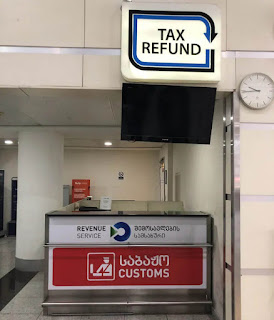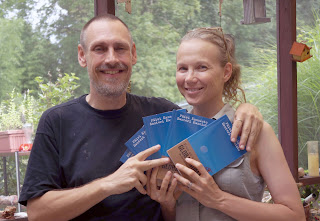Travelling in Swaziland, Lesotho and Namibia by Bus
How to travel through Swaziland, Lesotho and Namibia by bus?
Our southern African tour continued from Mozambique to Swaziland, Lesotho, and Namibia. The two tiny kingdoms surrounded by South Africa are very different. Swaziland is friendly and laid-back while Lesotho is poor and more challenging to enter because of lack of public transport. Both, however, are beautiful, hilly and mountainous. They reminded us little bit of Liechtenstein and Luxembourg. Namibia, on the other hand, is very German, particularly the capital Windhoek.
Minibus from Maputo, Mozambik to Manzini, Swaziland
We entered Swaziland from Maputo. There are minibuses going every day, but you have to wait until the vehicle is full. This might take some time. A few passengers had been waiting for the departure since 7 am. We arrived at 11 am and the bus finally left around 1pm. The cost is 190 rand (ZAR) per person and Mozambiquan meticales are not accepted. Luggage is stored in an uncovered trailer. There is quite a lot of hassle in the bus station as touts are trying to grab their share of the fares. You don't need to pay anything extra for your luggage, although the touts will try to convince you that you have to pay 15-30 rand.
The trip to the border took about two hours and the border formalities were easy. There were no queues, and the immigration and customs officials were relaxed. This is typical to countries that do not rip-off tourists with visas and visa-like fees. There are also free condoms available, which was a nice bonus. The rest of the trip to Manzini went smoothly and took another two hours.
Swaziland
Swazi people are very welcoming and friendly. We ended up staying in the Portuguese-owned Mocambique Hotel, which is located next to the bus station. The room was clean and nice, and the staff were friendly and flexible.
Swaziland has its own currency, lilangeni (SZL), but there is no need to exchange currency if you're carrying South African rands with you. They are 1:1 to local currency. Rand is accepted everywhere, although they will give you the change in lilangeni, which has no value outside Swaziland.
Swaziland is known for Reed festival, where the king chooses himself a new wife. In 2018, the king will take his 15th spouse.
From Swaziland to Johannesburg
There are no direct minibuses from Swaziland to Lesotho. You have to go either via Johannesburg or Durban. Locals advised us to go to Johannesburg, because there are approximately 3-4 buses going there every day (230 rand). We arrived at the bus station around 11am and waited for two hours for the bus to fill up. The seats were quite cramped and the air was damp, because other passengers didn't want to have the windows open. Päivi was squeezed between two huge Swazi ladies and was relieved when the bus finally arrived in Park Station in Johannesburg after some five and half hours of driving.
The arrival to Park Station minibus terminal was chaotic. Some passengers wanted to jump out before the station, which attracted a lot of shady guys. They were probably high and in desperate need of money. Some of them were hanging on to the bus and tried to grab whatever they could even when the bus started moving. We were not able to close the door. Then in the station, a group of very persistent touts surrounded us. We said that we didn't need any of their "security" or "guide services", but they kept following us demanding money in somewhat threatening manner.
Unfortunately the last bus to Bloemfontein, which is the nearest bigger town to Lesotho, had already left and they were closing the station for the night. We decided to stay in a nearby Park Station Inn (F1 hotel chain, 399 rand per room), which can be entered without exiting the station.
From Bloemfontein (SA) to Maseru (Lesotho)
The next day we took an Intercape Mainliner bus to Bloemfontein (230 rand). The trip took six hours and went rather pleasantly except that the one of the officers tried to scam us to pay for overweight luggage by pressing our backpack down while weighing it on an uncalibrated scale.
Finding a bus from Bloem to Lesotho proved challenging. At around 5:30am we were driving around a ghetto-like area with a local friend asking for a bus that Wikitravel had mentioned, but nobody knew anything about it. Lesotho is very poor and South Africans don't really travel there. Fortunately our friend suggested that he could take us there and back as otherwise we would never make it.
Maseru is some 150 km from Bloemfontein. The road was quite good and there were no queues at the Maseru Bridge border post. Everything went smoothly. Maseru itself is not particularly attractive. The main reasons for tourists to come to Lesotho are mountains, mountains, and mountains. Otherwise the country has not much to offer. It is known for traditional conical grass hats and colourful blankets. As in Swaziland, the country has its own currency, loti (LSL), but it's not really needed because rand is accepted everywhere. Just remember to get rid of all lotis you get, because they are worth nothing outside of Lesotho.
We returned to Bloemfontein using another route via Van Rooyen's Gate. The scenery on the way is hilly and there is very little traffic except the occasional cow crossing the road. Again, the border formalities were quick and easy, which made the trip pleasant. Thank you, Johan and Brigitte, for your kind help that made our trip possible!
Namibia
After our country-hopping we headed for Windhoek, Namibia to do work exchange. Namibia is mostly desert, and the bus ride from Bloemfontein was rather monotonous (790 rand). The trip took 28 hours, longer than normally, as we had to wait for a bus coming from Johannesburg. At the border, there were no queues, but the ladies in the South African customs wanted to search all ladies' bags pedantically and touch every single item they saw. The search took about 15 minutes per passenger, and as most of the passengers were ladies, we spent hours at the border. Päivi was interrogated for having condoms in her backpack. The ladies couldn't believe that she doesn't want to get pregnant. After the tiring experience, we swore that we would fly back to Johannesburg to avoid the hassle. However, after three weeks in Windhoek, we felt rested and returned the same route back to South Africa.
In Namibia, we made a website for one of the many hostels in Windhoek. The place was German-owned and run, and the place had mostly German guests as well as a lovely dog and a cat. We enjoyed our morning walks with the 11-year old dog, Vanilla. Our room was a tent in a tree so we lived like Tarzan and Jane!
For an African town, Windhoek is organised and looks quite European thanks to the German colonial influence. This was quite surprising to us as the Germans only ruled for 30 years in Namibia. After that came the South Africans.
Although the town is small and looks peaceful, appearances are deceiving. Muggings and robberies are common. They follow a familiar pattern: a car starts to follow unsuspecting pedestrians, then a couple of guys jump out of the car and grab bags and whatever valuables they can find. Sometimes they have knives, so it is a good idea to have something available as a "tip" for the potential thieves. Walking in the streets at night is not recommended as that is when most of the muggings occur. Ladies with handbags and tourists with backpacks are the most obvious targets.
Windhoek was our last destination on our southern African tour that was altogether 7184 kilometres (4464 miles). Many of the countries on our route were interesting, but there is not necessarily any reason for us to return except to South Africa. Despite its problems, it is still one of the most beautiful countries in the world. Hope whites and blacks can make peace with themselves and each other!








Comments